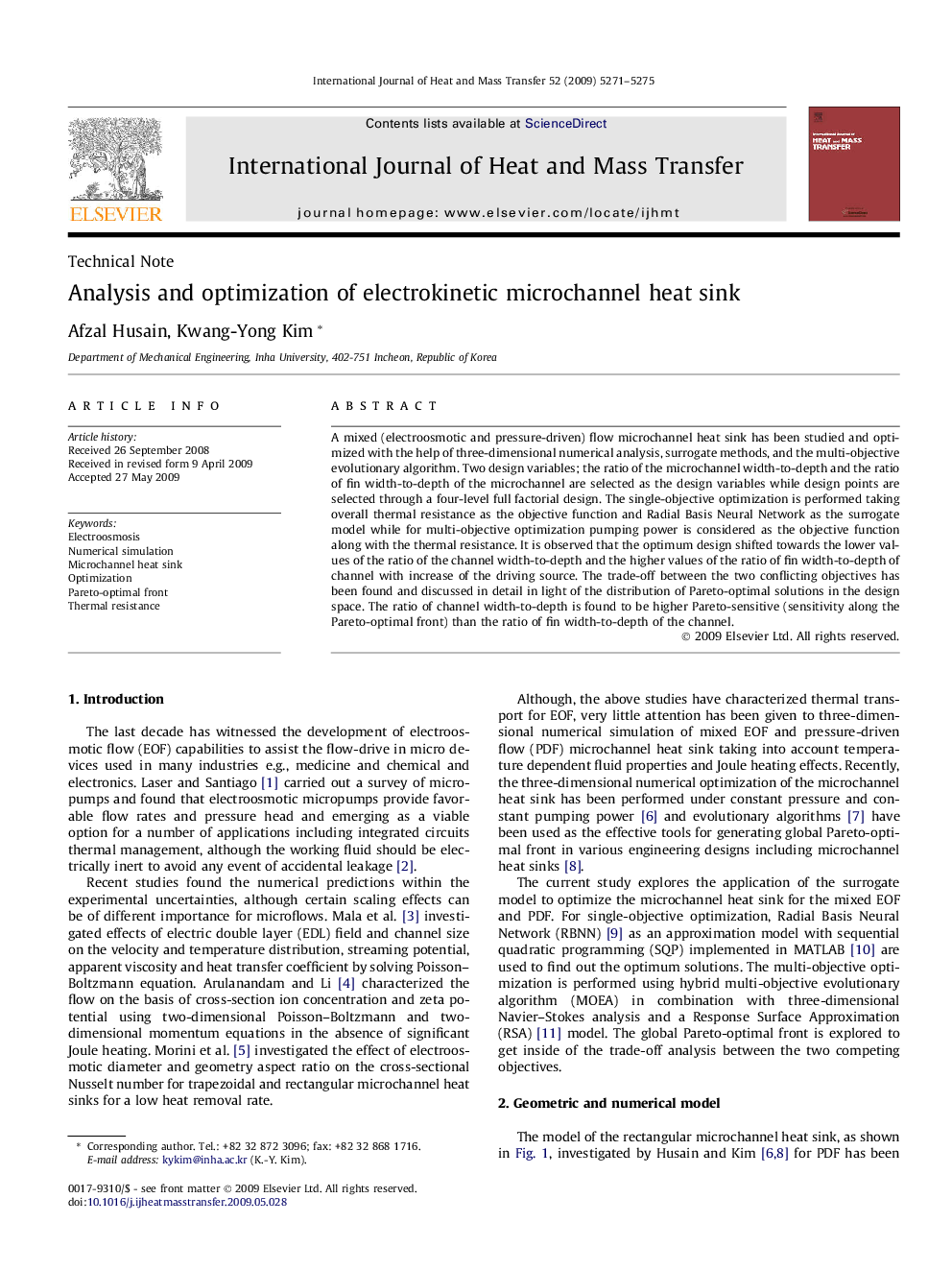| Article ID | Journal | Published Year | Pages | File Type |
|---|---|---|---|---|
| 661451 | International Journal of Heat and Mass Transfer | 2009 | 5 Pages |
A mixed (electroosmotic and pressure-driven) flow microchannel heat sink has been studied and optimized with the help of three-dimensional numerical analysis, surrogate methods, and the multi-objective evolutionary algorithm. Two design variables; the ratio of the microchannel width-to-depth and the ratio of fin width-to-depth of the microchannel are selected as the design variables while design points are selected through a four-level full factorial design. The single-objective optimization is performed taking overall thermal resistance as the objective function and Radial Basis Neural Network as the surrogate model while for multi-objective optimization pumping power is considered as the objective function along with the thermal resistance. It is observed that the optimum design shifted towards the lower values of the ratio of the channel width-to-depth and the higher values of the ratio of fin width-to-depth of channel with increase of the driving source. The trade-off between the two conflicting objectives has been found and discussed in detail in light of the distribution of Pareto-optimal solutions in the design space. The ratio of channel width-to-depth is found to be higher Pareto-sensitive (sensitivity along the Pareto-optimal front) than the ratio of fin width-to-depth of the channel.
